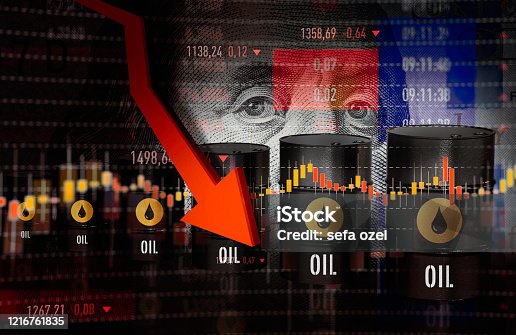Oil prices ticked up on Tuesday after four consecutive sessions of losses, buoyed by news that Iraq and its semi-autonomous Kurdish region had reached a preliminary agreement to resume crude exports through Turkey.
The development, if approved, could restore a significant volume of supply to global markets, even as investors weigh concerns about rising production and softening demand.
At the time of writing, Brent crude futures climbed to $66.71 per barrel, while U.S. West Texas Intermediate (WTI) crude rose to $62.49 per barrel. Both benchmarks recouped earlier declines, although analysts cautioned that lingering headwinds remain.
“Supportive elements are still low OECD oil inventories.
“On the other hand, higher crude exports from OPEC+ are a headwind for prices as well as the lack of new sanctions targeting Russian oil exports.”
UBS commodities analyst Giovanni Staunovo
Market sentiment improved following confirmation from Iraqi and Kurdish officials that Baghdad and Erbil had reached a tentative deal with international oil companies to restart crude flows through the long-idled pipeline to Turkey.

Exports via the route have been halted since March 2023 amid legal disputes and political tensions.
According to officials quoted by Reuters, the agreement pending approval by Iraq’s cabinet cwould enable the resumption of about 230,000 barrels per day (bpd) from the Kurdish region.
The move represents a significant development for a market that has been unsettled by persistent supply disruptions in recent years.
If confirmed, the deal could help ease some of the tightness in regional supply but would also add pressure to already fragile prices.
IEA Flags Surplus Risks

The latest monthly report from the International Energy Agency (IEA) added to investor caution, projecting that global oil supply would rise more rapidly in 2025 and that a surplus could expand in 2026.
OPEC+ members, having begun unwinding earlier output cuts, are set to inject more barrels into the market, while producers outside the group including the United States, Brazil, and Guyana are also expected to ramp up production.
Even though the IEA slightly upgraded its demand forecast due to stronger deliveries in advanced economies, it stressed that growth is not keeping pace with supply.
The agency highlighted the acceleration of electric vehicle adoption and economic headwinds from U.S. trade tariffs as major factors dampening long-term demand.
The IEA said, “The oil market is being pulled in different directions,” citing potential supply disruptions from sanctions on Russia and Iran alongside the reality of rising output elsewhere.
Geopolitical Risks Still in Focus

Despite bearish fundamentals, geopolitical tensions continue to inject uncertainty into the market.
Traders are closely monitoring discussions within the European Union about potentially imposing stricter sanctions on Russian oil exports. Such a move, if agreed, could significantly reshape flows and add volatility to prices.
Meanwhile, any escalation in the Middle East remains a wildcard. The fragile deal between Baghdad and the Kurds may help restore output, but analysts warn that political instability in the region still poses risks.
Oil prices remain caught between competing forces: rising supply on one side, and ongoing risks of geopolitical disruption on the other.
For now, the tentative Iraq-Kurdistan agreement is viewed as a constructive step toward restoring lost output, but it also raises the prospect of even greater surplus at a time of muted demand.
With Brent and WTI both eking out gains, investors will be watching closely for confirmation of the Iraqi cabinet’s decision on the pipeline agreement, as well as updates from U.S. stockpile data and any new developments from the EU on sanctions.
For consumers, the latest rebound in prices underscores the continuing volatility of global oil markets, a volatility that shows no signs of disappearing anytime soon.
READ ALSO: Market Cheers as Ghana’s Treasury Auction Breaks Four-Week Drought with 15.8% Oversubscription























